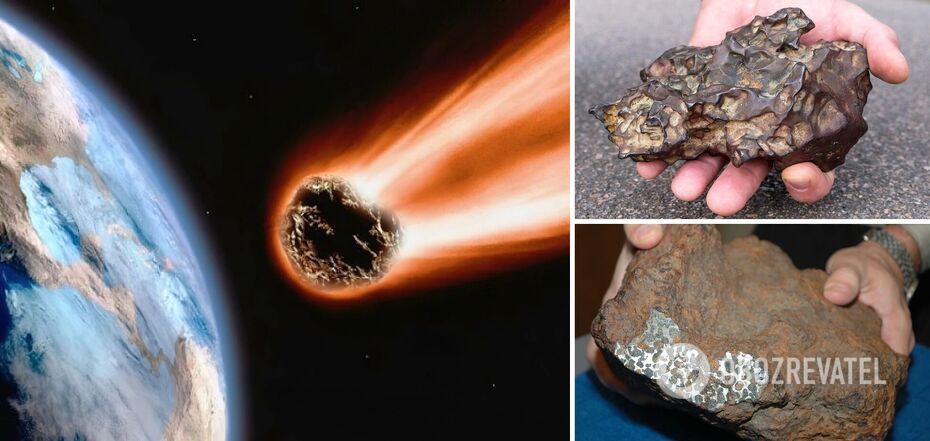Life
Any stone on Earth can be a meteorite: how to recognise it
Meteorites fall to earth all the time. As a rule, these are small stones that do not cause any consequences, let alone disasters. And literally anyone can find such a "gift from heaven". But how do you recognise a meteorite if you find an unusual stone?
As IFL Science explains, a meteorite is a remnant of a meteor or a fragment of an asteroid or even a comet that passes through the planet's atmosphere and ends up on its surface. There are three main types of meteorites: iron, iron-stone, and stone. Of course, they have different subgroups and are classified based on mineral content, structure and chemical composition, but this is the main division.
Iron meteorites are the most common - they are valuable, but not unique. If you come across a chondrite that can be more than 4.5 billion years old, it is an extremely rare and valuable find for science. Meteorites have several controlling features that help prove that they came from space and are not part of an old fence.
The first test is a density test. Meteorites contain metallic iron and other dense materials, which means they will be much heavier for their size than ordinary garden stones.
The next step is to test for magnetism. The metallic iron in a meteorite should attract magnets. However, this is not a strict rule - some extremely rare types of meteorites do not have this property. But this test usually works.
Another feature is the bizarre shape of the stone. This is because on its way to the Earth's surface, passing through the atmosphere, the meteor was exposed to very high temperatures and melted. This leaves unusual dimples on its surface, called regmagliptes. They most closely resemble fingerprints left by a potter on wet clay.
Also, due to melting during the flight through the atmosphere, a rocky crust can form on the surface of a meteorite. Most often it looks like an eggshell. If a space traveller has landed on our planet recently, it will be black in colour. Older samples will be brownish-rusty, because over time, the iron in its composition will oxidise, that is, rust.
The next sign of the stone's passage through the atmosphere is very thin lines caused by the melting of the meteorite, the so-called flow lines. They can be very thin, thinner than a human hair. They can be seen by an experienced specialist. But if you notice something like this on the surface of a found stone, it is a reason to take a closer look at it.
In addition to testing for magnetism, a potential space rock can be subjected to a scratch test. If you try to scratch its surface with something ceramic and see a black or red mark, this may indicate the content of magnetite or hematite, which are not usually found in meteorites. The accuracy of this test is also not 100%, but it can bring you closer to the solution.
If you can safely drill through the sample, then take a closer look at its insides. If you find any shiny metallic flakes, it means that you are holding a souvenir from space.
What meteorites cannot contain are crystals such as quartz. It is a remnant of frozen volcanic magma, meaning it came from the depths of the Earth. Volcanic rocks can also contain bubbles, which is not found in meteorites. An example of such a rock with bubbles is pumice stone.
And finally, to make sure that the find is cosmic in nature, it is best to contact a laboratory that can conduct all the relevant tests. For example, to distinguish slag from steel ore processing from a meteorite by its composition. Earthly iron usually does not contain nickel, while meteorite iron from outer space contains at least a small admixture of this metal.
Earlier, OBOZREVATEL told how water could have appeared on Earth.
Subscribe to OBOZREVATEL's Telegram and Viber channels to keep up with the latest news.



























